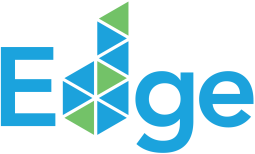So, you’re ready to become either an EDGE Expert or EDGE Auditor, but you need help figuring out your next steps. Don’t worry, we’re here to help! No matter which role is the best fit for you, you’ll need to attend training and pass the EDGE Exam.
We asked some professionals who recently passed their EDGE Exam to share some tips:
1) Complete GBCI’s EDGE Technical Workshop
The EDGE Technical Workshop helps participants understand the EDGE standard, use the software application and navigate the certification process. The course also prepares EDGE Expert candidates to pass the EDGE Exam. Register today for our new online version of the course.
EDGE Technical Online Workshop
Available on demand
Cost: $150 USD
Conducted in English or Spanish
Register for the English version online course
Register for the Spanish version online course
We provide students with a PDF copy of the training materials used during the course. Review these to make sure you know the basics inside and out. Here’s a breakdown of the question content you can expect on the EDGE Exam:

2) Explore and understand the EDGE software
“Practice at least 10 hours using the EDGE software. There is a lot to learn and reflect on while using the online tool, like the relationship between energy savings and embodied energy in material savings.” —Elda Silva, EDGE Auditor in Peru
The EDGE software is free to use at edgebuildings.com. Within minutes, you can determine the most cost-effective efficiency measures for a green building. Based on a building’s parameters, the EDGE software discovers energy and water-saving design opportunities through region-specific and use-based analysis. As a free design tool, the EDGE software presents predicted cost, savings and payback periods for a menu of green building measures.
Be sure to use the EDGE software while studying. You’ll want to create hypothetical projects in the software and see how the results change when you choose different options. Make sure to create different building scenarios, so you can comprehend the results each measure gives you.
“While using the EDGE software, make sure to focus on calculations. Learn how to calculate measures like U value (from R value and thickness and Lambda value), COP and EER from equipment, window-to-wall ratio and natural ventilation.” —Maria Fernanda Aguirre, EDGE Auditor in Chile
3) Study the EDGE User Guides and Methodology Report
“What helped me the most was to make a chart where I compared and summarized all of the EDGE User Guides. First, I took a quick look at the systems as a whole and marked all the similarities. I listed the five building types across the first row of the chart, and then I listed all of the EDGE efficiency measures down the first column. I added the requirement for each measure and what I needed to do as an auditor in the design and construction phases. When I finished my chart, I had a matrix summarizing all of the key terms of the user guides.” —Vanessa Montezuma Ramos, EDGE Auditor in Peru
You can click on any efficiency measure within the EDGE software for a quick explanation, or obtain more information and a deeper explanation by connecting to one of the building-specific EDGE User Guides. Be sure to review the EDGE User Guides in depth, as well as the Methodology Report.
4) Be sure to know the roles and responsibilities of the EDGE Auditor
“Most importantly, one must have a clear cut understanding of the role of the auditor vs. consultant, apart from studying the user guides.” —Satheesh Selvam, EDGE Auditor in India
To pass the exam, you will need to know the ins and outs of what the EDGE Auditor does as part of the certification process. You’ll need a grasp of which efficiency measures are appropriate for desk (documentation) audit versus site audit, as well as when and how often to audit each measure. In addition, you must be able to recognize and avoid conflicts of interest between an EDGE Auditor and a consultant.
You will also need to understand the relationships and responsibilities among the parties involved in the certification process: EDGE Auditor, clients, project teams, the local and global certification providers and IFC. Finally, you’ll need to know the various responsibilities of the auditor: ethics, contracts, renewing/maintain EDGE Auditor status and pricing. Be sure to carefully study IFC’s EDGE Expert and Auditor Protocols, Certification Protocol and Glossary.
“Go beyond the EDGE Standard. To pass the exam, you must also understand what your role as an auditor will be, as well as the roles of the client and the EDGE Partner. Know how the certification process works and the appropriate communication protocols to follow.” —Rodrigo Gomez Junco, EDGE Auditor in Mexico
5) Take the practice exam via Prometric ($30 USD)
About the EDGE Exam
The EDGE Exam is administered by Prometric (a third-party testing center) and currently costs $100 USD. A complete list of test center locations may be found at prometric.com/edge by clicking on the “Locate a Test Center” link. You may also take the EDGE Exam from the comfort of your home or office as long as your workspace and computer meet the requirements specified in the Remotely Proctored Candidate Information Bulletin.
The exam is administered via computer and consists of 75 multiple-choice questions, with a 2.5-hour limit. All exams are closed-book. The exam is currently available in English, Chinese, Spanish, Vietnamese and Indonesian Bahasa.
Please contact IFC with any additional questions about the EDGE Exam.



Comments
EDGE Exam from the comfort of
EDGE Exam from the comfort of your home Remotely Proctored